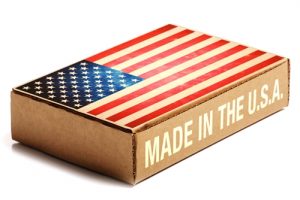
Certain elements of food labeling are virtually universal, such as ingredient listings and nutrition facts. Another piece of the puzzle, one which has the potential to cause confusion even if it’s not present, is labeling that states an item’s country of origin.
What does it mean to be from a certain country or territory, and should this disclosure be mandatory? Two recent stories approach various perspectives on the issue, one from each side of the U.S.-Canda border.
Meat Industry to Change Rules Again?
According to the Associated Press, American cattle ranchers. Aren’t happy with a recent Department of Agriculture decision. Between 2009 and 2016, meat sold in the U.S. had to disclose its country of origin.
Now, however, that rule has disappeared from the books. The ranchers have begun a legal proceeding, invoking the Meat Inspection Act in an attempt to get the USDA to reverse its position and require country of origin labeling again.
The AP reported that under current rules, imported meats can receive the “Product of USA” distinction. The association representing the cattle industry in the suit stated that this rule has enable. Some meat producers to twist customer expectations, and allows them to import meat from countries. Where there are less stringent health and safety laws without disclosing that fact. It’s unclear what the Trump administration’s stance on the matter is – President. Trump previously supported country of origin labels, then reversed himself.
What Does ‘Made in Canada’ Mean?
Canadian companies are dealing with their labeling controversies. The Financial Post reported that in the past year, produce growers have been find falsely adorning their products. With Canadian labels, potentially devaluing the whole process of regional labeling. When consumers hear about loads of mislabeled produce and huge fines, they may lose faith in the “Product of Canada” branding.
The source pointed out that there are devices capable of determining the origin of a piece of produce, based on sensing its composition. These would have to be used at the agency level, if at all – they are far too complex and expensive to be consumer technology today.
Pride in Place
Considering the intensity with which country of origin for food products is debate today, it’s clear. That this is an effective piece of information to include on food packaging when companies are allow to do so. Organizations should consider this disclosure as part of high-quality product labeling where and when possible.
Food producers can get high-quality labeling results in-house if they own a printer such as the Afinia A801 – check it out in our U.S. or Canadian store.
 Visit our US Store
Visit our US Store Visit our Canadian Store
Visit our Canadian Store US Customers
US Customers
 US Customers
US Customers Follow us on facebook
Follow us on facebook Follow us on twitter
Follow us on twitter Follow us on linkedin
Follow us on linkedin Follow us on youtube
Follow us on youtube Follow us on google+
Follow us on google+ Pinterest
Pinterest
Leave a Reply